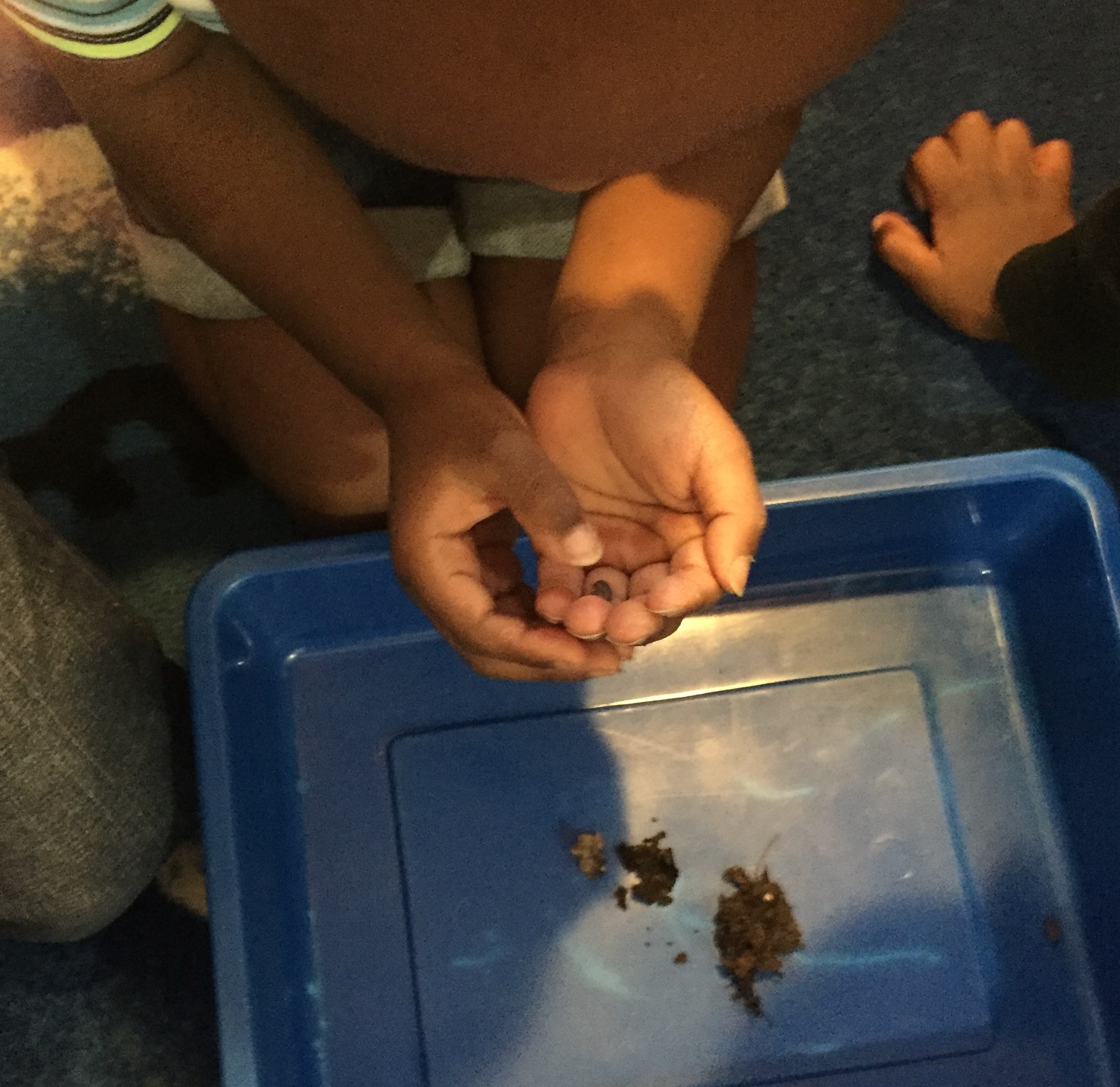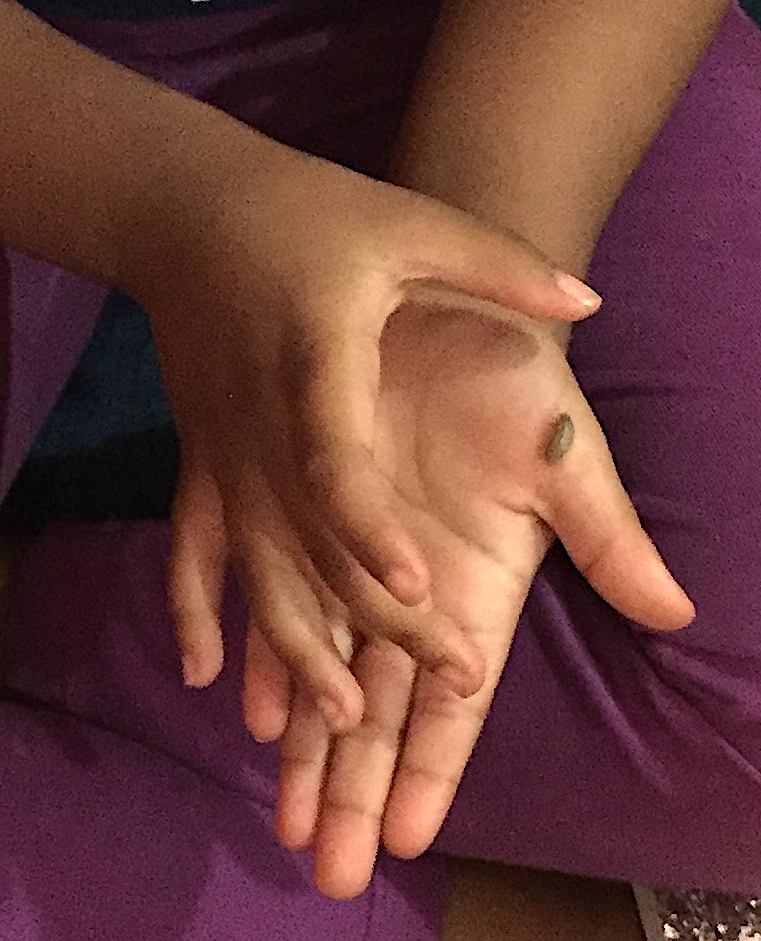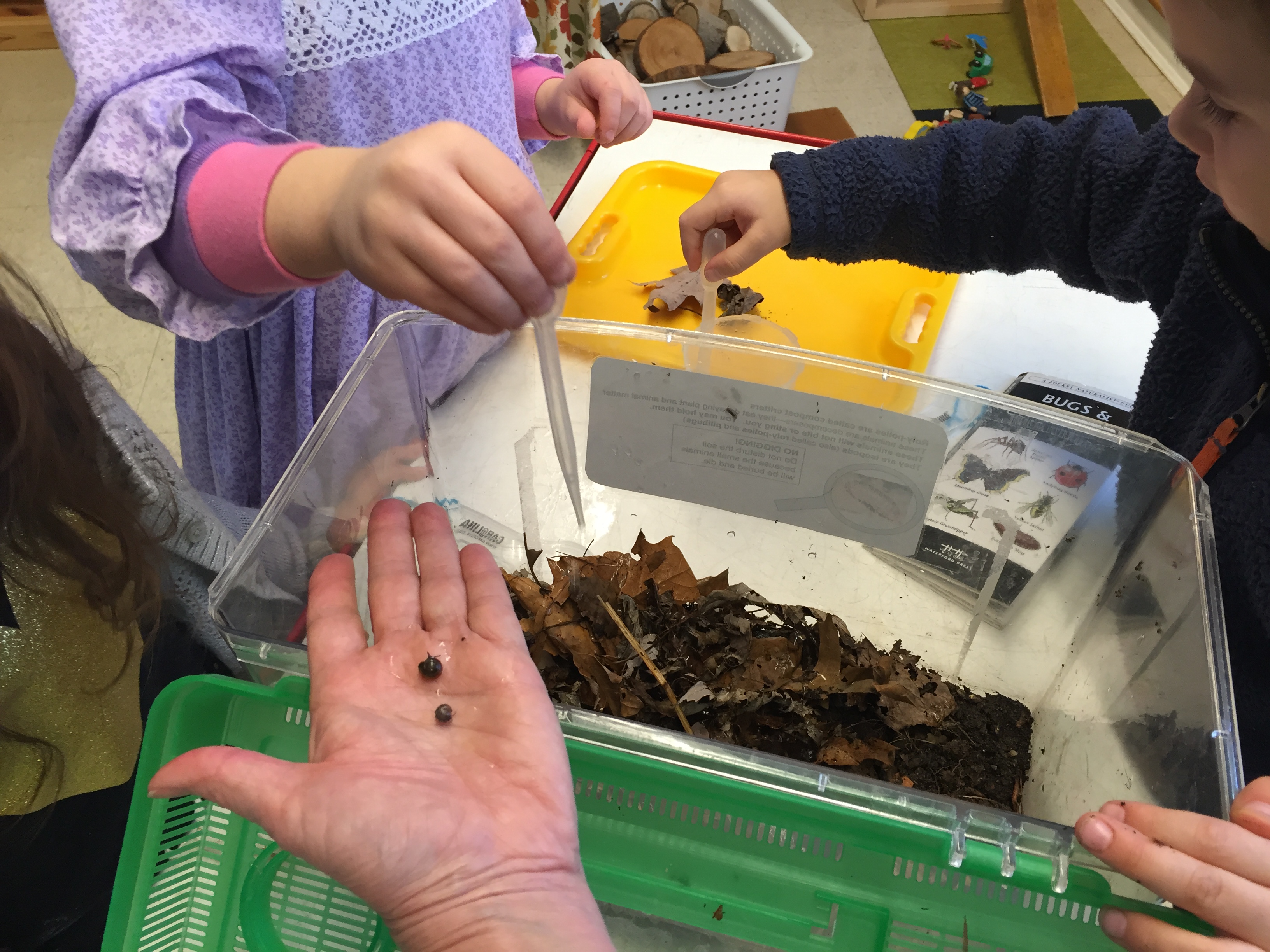Balloon Racers
By Cindy Workosky
Posted on 2018-09-25
Anyone who teaches middle school students knows they have a lot of energy, and a lot of hot air. Why not put it to use? In this activity, students will be challenged to modify a simple plastic balloon racer to travel farther and faster. Students begin by asking questions and making observations to understand how the racers work. Racers can be found here. Find and print my student form here.
During the activity, students make three separate modifications to improve distance and speed. Once they’ve completed the activity, students will debate the possibility of wind-powered cars and wind turbines as a local energy source.
 Introducing students to the engineering design process early in the year is exciting and engaging. This activity is much more than a simple design challenge, which often doesn’t give students the opportunity to make revisions. In this learning experience, students are encouraged to explore many of the science and engineering practices to grow their understanding of force and motion and engineering content. Their learning is enhanced by providing opportunities for them to argue with evidence as they debate the pros and cons of using wind-powered cars and wind turbines as a local, renewable energy source.
Introducing students to the engineering design process early in the year is exciting and engaging. This activity is much more than a simple design challenge, which often doesn’t give students the opportunity to make revisions. In this learning experience, students are encouraged to explore many of the science and engineering practices to grow their understanding of force and motion and engineering content. Their learning is enhanced by providing opportunities for them to argue with evidence as they debate the pros and cons of using wind-powered cars and wind turbines as a local, renewable energy source.
| Performance Expectations | |
|
MS-ETS1-1 Define the criteria and constraints of a design problem with sufficient precision to ensure a successful solution, taking into account relevant scientific principles and potential impacts on people and the natural environment that may limit possible solutions. Clarification Statement: none Assessment Boundary: Assessment is qualitative, as it is limited to observations. |
After determining how the balloon racer works and explaining Newton’s Third Law in their own words, students determine how the racer could be modified to allow it to go farther and faster. Students gather baseline data by running their racers before modifications. Students measure distance in centimeter and speed in seconds, then calculate speed. |
|
MS-ETS1-2 Evaluate competing design solutions using a systematic process to determine how well they meet the criteria and constraints of the problem. Clarification Statement: none Assessment Boundary: Assessment will be qualitative based on effort made, and quantitative based on data collected. No student will be penalized for the car’s decreases in distance and time. |
Students brainstorm ways their individual racers could be modified to increase distance and decrease speed. Making one modification at a time, students retest, collecting data from distance, time, and speed. |
|
MS-ETS1-3 Analyze data from tests to determine similarities and differences among several design solutions to identify the best characteristics of each that can be combined into a new solution to better meet the criteria for success. Clarification Statement: none Assessment Boundary: none |
Students graph baseline data and data from all three modifications, as well as complete analysis questions focusing on independent and dependent variables. |
|
MS-ETS1-4 Develop a model to generate data for iterative testing and modification of a proposed object, tool, or process such that an optimal design can be achieved. Clarification Statement: none |
Students choose their best modified model that will be entered into a class contest after school. Students are blind drawn and placed in a bracket playoff system. All students take their balloon racers home. |
|
Science and Engineering Practices |
This activity allows students to apply basic physics principles (Newton’s Laws) to a simple toy, a balloon racer, to modify and re-engineer it to make it travel faster and farther. Students must determine how the vehicle works before making modifications one at a time |
|
Disciplinary Core Ideas |
The Science and Engineering Process Skills takes students through the process of design, test, and redesign. Students also redesign based on group members’ feedback and observations. The questions in the form’s “redesign” section address the idea of modifying for improvement, as they specifically ask: “What worked? Why did this work? What didn’t work? Why didn’t this work? What could make your design better?” |
|
Crosscutting Concepts |
Montgomery County, Indiana, finds itself in a very unique situation. We have a solar park, but a company wanting to build wind turbines has met with opposition. With this activity, students will direct their attention from the wind-powered cars to the use of wind power as a local energy source or a potential source of power for vehicles. The Argument Driven Inquiry (ADI) format will be used for this phase of the activity. |
This learning experience is very relevant, as the conversation about using wind power is actually occurring in their community.
This is just one way of engaging students in the practice of asking questions early in the year. After each modification, I challenge students to ask themselves at least two questions about their work: What went well? What is something else you could try? What suggestion would you like with the class? How does this process of modifying an original design apply to the real world? In what types of careers might this process be used regularly?



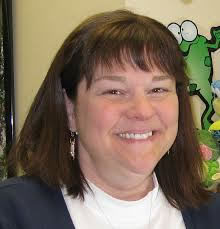 Shannon Hudson is a science teacher at Crawfordsville Middle School in Crawfordsville, IN. She currently teaches four levels of science classes, including sixth- and seventh-grade advanced science, sixth-grade inclusion co-teaching, and seventh-grade regular science. The school’s adopted curriculum allows for integrated, modified problem based learning (PBL) instruction.
Shannon Hudson is a science teacher at Crawfordsville Middle School in Crawfordsville, IN. She currently teaches four levels of science classes, including sixth- and seventh-grade advanced science, sixth-grade inclusion co-teaching, and seventh-grade regular science. The school’s adopted curriculum allows for integrated, modified problem based learning (PBL) instruction.
Hudson has a Bachelor’s degree from Purdue University, with a concentration in elementary education, junior high science, and gifted and talented education, and a Master’s degree in Education from Indiana Wesleyan University. Hudson has taken many courses throughout the years at a variety of universities to further her studies in science education.
This article was featured in the September issue of Next Gen Navigator, a monthly e-newsletter from NSTA delivering information, insights, resources, and professional learning opportunities for science educators by science educators on the Next Generation Science Standards and three-dimensional instruction. Click here to sign up to receive the Navigator every month.
Visit NSTA’s NGSS@NSTA Hub for hundreds of vetted classroom resources, professional learning opportunities, publications, ebooks and more; connect with your teacher colleagues on the NGSS listservs (members can sign up here); and join us for discussions around NGSS at an upcoming conference.
The mission of NSTA is to promote excellence and innovation in science teaching and learning for all.
Future NSTA Conferences
2018 Area Conferences
2019 National Conference
Follow NSTA
Anyone who teaches middle school students knows they have a lot of energy, and a lot of hot air. Why not put it to use? In this activity, students will be challenged to modify a simple plastic balloon racer to travel farther and faster. Students begin by asking questions and making observations to understand how the racers work.
First Graders Become Corn Experts: Using Questions to Drive Instruction
By Cindy Workosky
Posted on 2018-09-25
First graders love when fall comes to Kansas. It’s a magical time when lots of events are occurring in their environment, and I take full advantage of their natural curiosity. We begin the school year with a mini science unit featuring corn and agriculture. Every year in May, my class plants a few corn kernels near our flower garden. By the time school starts in the fall, the corn stalks stand out among the flowers.
As we water the garden, students start asking questions. How did the corn get here? Is it ready to pick? How high it will grow? Do we get to pick it? That is all I need to get the unit rolling!
I try to bring authentic items into our classroom whenever possible. These items become part of the phenomenon that I use to start lessons and to pique interest in a subject. With this particular unit, we first watered our plants, and the next day, I brought in 6 giant cornstalks donated by a local farmer. These cornstalks had the root balls attached and were in seed sacks.
I put them and a few flower plants in our activity area and didn’t mention them. The kids had plenty to say and were excited as they attempted to make sense of what we would do with both of these plants. As they observed, I wrote down the questions they asked. The next day, we used those questions as the springboard to our discussion about their experiences with corn and flowers. Then we donned our lab coats and safety goggles and formed small groups to pull apart the cornstalks and flowers to compare and contrast their parts.



I always encourage my young scientists to ask questions like “I wonder why…?” “I wonder if….?” “I wonder what…?” When students are encouraged to begin their questions with “I wonder,” it adds to the subject’s relevance. I believe that by asking questions about their world, children become more engaged in defining problems and seeking answers.

After we shared all of our findings, we recorded our thoughts and wonders in our journals. The big questions of the day were what the names of all of the parts were and what they were used for. Students defined their own problems, and that led to some class labeling and deep discussions about why corn had all these parts and where could we find more information.


We used books like Corn by Gail Gibbons, Corn Is Maize by Aliki, From Kernel to Corn by Robin Nelson, and Corn (All About Food Crops) by Cecelia H. Brannon. We also used https://kscorn.com and http://ksagclassroom.org as resources. I find that by introducing vocabulary after we explore the phenomenon, these words are more easily understood and applied, as they have more meaning at this point. Our first-grade curriculum asks us to examine how plants use their parts to survive, grow, and meet their needs. My first graders asked those same kinds of questions and were able to determine the answers in various ways.

It was now time to put our newfound corn knowledge to use. My students realized that even though we have cornfields all around us, they didn’t really know that much about corn. To solve that problem, we wrote a class book titled Coconut Loves Corn in which a little monkey has tired of eating bananas and wants to move to Kansas to learn about and eat different kinds of corn. The book is amazing, and we published it on large paper and mounted it on signboards that will be placed around our outdoor school’s walking trail.
We hope to encourage all Bentwood Elementary students to read our story and learn interesting corn facts while they walk the trail. To promote our book, we created a brief description that will be read during morning announcements. Of course our blurb begins with the question, “Have you ever wondered why so much corn is grown in Kansas?”
Do you incorporate agriculture in your science lessons? If so, I’d love to hear your ideas. I love sharing and getting new lessons for my classroom. Comment below, and let’s be “amaizing” together!
Next Gen Science Standards
|
1-LS1-1. |
Use materials to design a solution to a human problem by mimicking how plants and/or animals use their external parts to help them survive, grow, and meet their needs. |
|
1-LS1-2. |
Read texts and use media to determine patterns in behavior of parents and offspring that help offspring survive. |
|
1-LS3-1. |
Make observations to construct an evidence-based account that young plants and animals are like, but not exactly like, their parents. |
|
K-2-ETS1-3. |
Analyze data from tests of two objects designed to solve the same problem to compare the strengths and weaknesses of how each performs. |
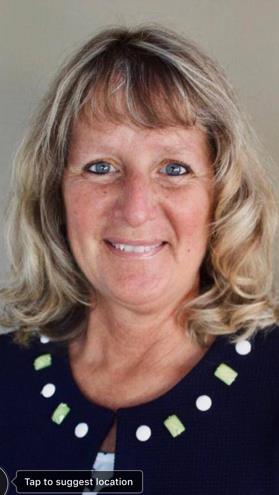 Nancy Smith is a first-grade teacher at Bentwood Elementary School in the Olathe Public Schools district in Overland Park, Kansas. Her enthusiasm for science is evidenced by the many engaging activities she plans for her students, from building chicken playground equipment to hosting mini science expos to starting a flower tire garden. Smith is a National Board Certified–teacher who received the 2016 Presidential Award for Excellence in Mathematics and Science Teaching. She is passionate about using the environment as a springboard to learning.
Nancy Smith is a first-grade teacher at Bentwood Elementary School in the Olathe Public Schools district in Overland Park, Kansas. Her enthusiasm for science is evidenced by the many engaging activities she plans for her students, from building chicken playground equipment to hosting mini science expos to starting a flower tire garden. Smith is a National Board Certified–teacher who received the 2016 Presidential Award for Excellence in Mathematics and Science Teaching. She is passionate about using the environment as a springboard to learning.
This article was featured in the September issue of Next Gen Navigator, a monthly e-newsletter from NSTA delivering information, insights, resources, and professional learning opportunities for science educators by science educators on the Next Generation Science Standards and three-dimensional instruction. Click here to sign up to receive the Navigator every month.
Visit NSTA’s NGSS@NSTA Hub for hundreds of vetted classroom resources, professional learning opportunities, publications, ebooks and more; connect with your teacher colleagues on the NGSS listservs (members can sign up here); and join us for discussions around NGSS at an upcoming conference.
The mission of NSTA is to promote excellence and innovation in science teaching and learning for all.
Future NSTA Conferences
2018 Area Conferences
2019 National Conference
Follow NSTA
First graders love when fall comes to Kansas. It’s a magical time when lots of events are occurring in their environment, and I take full advantage of their natural curiosity. We begin the school year with a mini science unit featuring corn and agriculture. Every year in May, my class plants a few corn kernels near our flower garden. By the time school starts in the fall, the corn stalks stand out among the flowers.
Scaffolding the Practice of Asking Questions and Defining Problems
By Cindy Workosky
Posted on 2018-09-25
With the adoption of the Next Generation Science Standards (NGSS), teachers are wondering how to teach their students to do the science and engineering practices (SEPs). Some SEPs, such as carrying out investigations and analyzing data, are a natural flow from the old science standards. Many, however, are new for both students and teachers. For example, the practice of asking questions and defining problems is something we have not required our students to do before: the questions or problems were already asked or defined for the students to answer. How can we move both our own practice, as well as our students’ thinking, from the canned version of questions and problems to asking their own thoughtful questions about a phenomenon, and defining problems based on a scenario?
As teachers, many of us may believe we need students to be proficient at this skill immediately! But realistically, we need to move slowly when teaching them these new skills so that students can move toward proficiency over time. NGSS implementation will not happen overnight, nor will teachers and students excel at these new skills without ongoing learning and practice. So how do we give students the practice that they need? And what can we do to help them learn these new skills effectively?
Initially, teachers will need to learn the skills required by the SEPs, if they have no experience with them. Training to help teachers learn about the pedagogical shifts required with NGSS implementation is available from NSTA and state science teacher organizations. Once teachers have some experience with these new skills, they can start teaching them to their students. Teachers can leverage their own experiences in practicing and learning the new SEP skills, using similar practices with students that they experienced as learners.
In my classroom, I have used several different methods to help students acquire the skill of asking questions and defining problems. One method I use with my first-year biology students is to scaffold the process for them and provide tools to help them develop their skills. Some scaffolds I have used include modeling the practice, using sentence frames, and asking them guiding questions to lead them to developing their own questions.
For example, at the start of the year, I ask many questions about a phenomenon, modelling good questioning practices. After a while, I start asking the students questions like these: What do you wonder about this? What questions do you still have? What could you do to find out more about this? These questions help focus students on what they still need to answer to solve the problem and help them begin asking their own questions.
Sentence frames—providing students with a few sentence stems to help them begin to generate their own questions—are often helpful. You can generate some stems of your own for each SEP, or use some questions that focus on a given crosscutting concept (CCC). For example, in biology, we are studying ecosystems, so I can prompt with these questions: What are the system’s boundaries? Or how might energy and/or matter flow within this system?
These prompts can help students formulate additional questions to further explore the phenomenon they’re investigating. What other methods might you use to help students become proficient with the SEPs and CCCs?
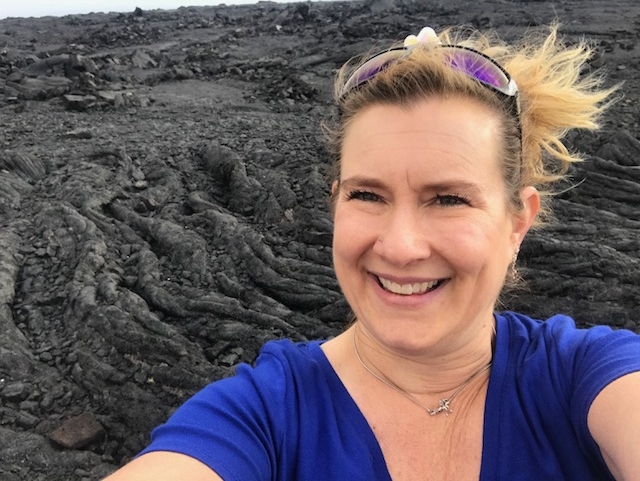 Heather A. Wygant has been teaching secondary science for 21 years, primarily in high school. She has taught biology, geology, physics, chemistry, oceanography, and AP Environmental Science. She also served as a Teacher on Special Assignment for science and math and helped her district implement the NGSS over the past three years. Now back in the classroom, she is continuing NGSS implementation. Wygant holds bachelor’s and master’s degrees in geosciences and a second master’s degree in science education.She is currently pursuing a PhD in Curriculum and Instruction STEM, with a research focus on NGSS implementation.
Heather A. Wygant has been teaching secondary science for 21 years, primarily in high school. She has taught biology, geology, physics, chemistry, oceanography, and AP Environmental Science. She also served as a Teacher on Special Assignment for science and math and helped her district implement the NGSS over the past three years. Now back in the classroom, she is continuing NGSS implementation. Wygant holds bachelor’s and master’s degrees in geosciences and a second master’s degree in science education.She is currently pursuing a PhD in Curriculum and Instruction STEM, with a research focus on NGSS implementation.
This article was featured in the September issue of Next Gen Navigator, a monthly e-newsletter from NSTA delivering information, insights, resources, and professional learning opportunities for science educators by science educators on the Next Generation Science Standards and three-dimensional instruction. Click here to sign up to receive the Navigator every month.
Visit NSTA’s NGSS@NSTA Hub for hundreds of vetted classroom resources, professional learning opportunities, publications, ebooks and more; connect with your teacher colleagues on the NGSS listservs (members can sign up here); and join us for discussions around NGSS at an upcoming conference.
The mission of NSTA is to promote excellence and innovation in science teaching and learning for all.
Future NSTA Conferences
2018 Area Conferences
2019 National Conference
Follow NSTA
With the adoption of the Next Generation Science Standards (NGSS), teachers are wondering how to teach their students to do the science and engineering practices (SEPs). Some SEPs, such as carrying out investigations and analyzing data, are a natural flow from the old science standards. Many, however, are new for both students and teachers. For example, the practice of asking questions and defining problems is something we have not required our students to do before: the questions or problems were already asked or defined for the students to answer.
Reflections of the sunlight
By Peggy Ashbrook
Posted on 2018-09-21
Connecting with other educators who share my interests and help me expand them is one of the benefits of writing for NSTA’s journal and blog. Guest blogger Tom Lough is a contributor to Science and Children and has taught science and science education classes at many levels. He is now a science education consultant in Round Rock, TX.
Welcome Tom!
Like many, I have unbounded enthusiasm for the 2018 August issue of Science and Children! Well done, NSTA! Did you read the Early Years column, titled “Making Sense of Their World”? Young children soak up their experiences and observations of the world around them, and ask all sorts of questions as they try to put everything together.
The second part of the column reminded me of an activity we are doing with five classrooms at Caldwell Heights Elementary School in Round Rock, TX, observing the apparent motion of the sun. These rooms all have south-facing windows, meaning that the sun shines into each room all year long.
Instead of observing the sun directly, we are using a small craft mirror glued to a south-facing windowsill to produce a reflection on the classroom ceiling. As soon as the mirror was installed and the spot appeared on the ceiling, the effect was immediate on the children. They were mesmerized by the bright dot. They couldn’t take their eyes away from this new classroom visitor. After a few minutes, someone said, “I think it’s moving!” They were hooked!
If you decide to try this, from this point on you can expect many questions from the children. It is not necessary, or even preferable, to answer them. Rather, invite them to continue their observations and see if they can find their own answers. Encourage journaling, sketching, or photographing as ways to document their observations. Then they can search for patterns more systematically.
There are many advantages to this particular activity. One of the most important ones is safety. There is no need to look directly at the sun. Second is its simplicity. Just glue the mirror in place and step away. No moving parts, no further assembly required. And then there are the many different patterns.
Children will be quick to point out the obvious patterns, including when and where the dot appears and disappears each day, which direction it moves across the ceiling, and the degree to which the sky is cloudy or clear.
As the weeks and months go by, they might notice that the path of the daily movement changes. During the fall months, the path gets farther away from the window, and during the winter/spring months, the path is closer to the window. Older children might figure out that this has something to do with the height of the sun in the sky at different times of the year, which, in turn, is related to the tilt of the earth’s axis. For example, children might choose to photograph the dot each week. It won’t be long before the movement of the path is obvious, especially if the ceiling is patterned or if it has a grid of tiles for easy reference.
Within this simple activity is an unexpected level of complexity that can be uncovered with the addition of a simple action by the teacher or other adult. Select a convenient time of day somewhere between 11:00 and 1:00, and use a push pin or piece of tape to mark the location of the dot on the ceiling at that same time once or twice per week. You will need to be consistently punctual about this, down to the minute. Don’t worry, though, because your “little alarm clocks” will remind you! (And use a safe stool or ladder.)
Over the course of the school year, the marks on the ceiling will trace out part of a pattern called the analemma, which is the apparent path of the sun in the sky as seen at the same time each day for a year. (To trace the full analemma, someone would have to come in during the summer months to continue marking the dot position at the appointed time.)
 The analemma is a pattern that has been known for hundreds of years, and was printed in the middle of the Pacific Ocean on globes some time ago (see photo). Shadows of outside objects outdoors, such as the school flagpole, could also be used to generate an analemma.
The analemma is a pattern that has been known for hundreds of years, and was printed in the middle of the Pacific Ocean on globes some time ago (see photo). Shadows of outside objects outdoors, such as the school flagpole, could also be used to generate an analemma.
Who knew that something as simple as gluing a mirror to a window sill could produce such a wide range of effects and invite so many questions?
Note that if you do decide to trace the analemma, be alert to when Daylight Savings Time comes and goes. We suggest keeping the same observation time, so that the children can see the curious effect of the change in path. In other words, if you had selected 11:30 AM as your “dot time” prior to the time change, continue using 11:30 AM after the change, even though the sun will be in a different location.
Resources
An example of the type of mirror, https://www.joann.com/big-value-mirrors-1-inch-round-25-pc/10232692.html
Lough, T., & Vanover, C. (2014, October). Find your School’s Analemma. Science and Children, 52(2): 55-59.
Connecting with other educators who share my interests and help me expand them is one of the benefits of writing for NSTA’s journal and blog. Guest blogger Tom Lough is a contributor to Science and Children and has taught science and science education classes at many levels. He is now a science education consultant in Round Rock, TX.
Welcome Tom!
Ed News: Igniting Students’ STEM Interest Begins With Education Their Teachers
By Kate Falk
Posted on 2018-09-21

This week in education news, Missouri Senate passes STEM awareness legislation; NSF awards 5 diversity grants under its new INCLUDES initiative; U.S. Congress pledges $71.5 billion in education funding for fiscal 2019; new framework developed to help define high-quality project-based learning; Arizona program instructs teachers on how to bring more engaging STEM lessons into their classrooms; and NSTA president discusses her ideas on science literacy and education at the World Conference on Science Literacy in Beijing.
Alternative Sentencing Courts, STEM Awareness Program Pass Senate
Legislation that expands alternative treatment courts and STEM education was finally passed by the Senate and sent to the governor. Many jobs that require training in STEM subjects — science, technology, engineering and math — are not being filled because schools are not training enough people, said Sen. Doug Libla, R-Poplar Bluff. Read the article featured in The Missourian.
What NSF’s New Diversity Grants Say About Attempts To Help Minority Students
Ted Hodapp has spent the past 5 years helping boost the number of minority students pursuing U.S. graduate degrees in physics. But Hodapp, who works on education and diversity issues at the American Physical Society in College Park, Maryland, knows the society’s Bridge Program will at best make only a small dent in the nationwide dearth of blacks, Hispanics, and Native Americans working in all science, technology, engineering, and math (STEM) fields. He wanted an opportunity to show that Bridge’s approach—which starts by encouraging graduate schools to de-emphasize scores on the standardized GRE entrance exam in the student selection process—could work in other STEM disciplines and, in doing so, promote the value of diversity in U.S. higher education. Read the article featured in Science magazine.
Science Fair’ Documentary Makes Its Own Statement About Young Science Whizzes
That other film, “Science Fair,” produced by the National Geographic Society, opens in one New York City theater Friday and in other cities throughout the fall. “Science Fair,” directed by Cristina Constantini and Darren Foster, follows several groups around to the Intel International Science and Engineering Fair, meeting them in their home states or countries, watching as they nervously prepare to explain their projects to the judges and interact awkwardly with their peers, and waiting for the payoff—the awards presentations. Read the article featured in Education Week.
Appropriations Bill Sets Aside Over $71B For Ed, But Is It Enough?
A group of lawmakers from the U.S. House and Senate finalized a massive appropriations bill Thursday that would pledge $71.5 billion in education funding for fiscal 2019. But as school districts wait for President Donald Trump to sign the bill into law, many struggle, especially in the face of a new school year, to fund the bare necessities. Read the article featured in Education DIVE.
Defining High-Quality Project-Based Learning
A growing number of educators around the world believe that project-based learning (PBL) is an important instructional approach that allows students to master academic skills and content knowledge, develop skills necessary for future success, and build the personal agency needed to tackle life’s and the world’s challenges. Many districts are either already using PBL or are on the verge of using this approach in classrooms. Educators can find a wealth of resources on how to plan for and get started with PBL, but until recently, there were far fewer resources on what the outcome of high-quality student experiences ought to look like. Read the article featured in eSchool News.
Igniting Students’ STEM Interest Begins With Education Their Teachers
A program in the Arizona Science Center trains teachers how to bring more engaging STEM lessons to their classrooms. When 3rd grade STEM teacher Amanda Roum went to camp this summer, instead of playing games and learning archery, she developed a science curriculum. And after five days at the Arizona Science Center in Phoenix, she took that curriculum, along with the materials she needed, back to her classroom at the Tartesso Elementary School in Buckeye, Arizona — just in time for school to start in August. Read the article featured in Education DIVE.
World Conference On Science Literacy In Beijing: Talk By Christine Anne Royce
Christine Anne Royce, President of the US National Science Teachers Association, talks about her ideas on science literacy and education during the World Conference on Science Literacy in Beijing. Listen to her interview with China Daily.
Beyond STEM: Why AI Demands Higher-Level Skills
There is plenty of discussion about the need for STEM skills as the gateway to employment opportunities (and for employers, staffing requirements) in the artificial intelligence-enhanced economy ahead. But emphasizing STEM skills may not be enough — there needs to be a greater emphasis on the way people interact with each other and manage their workplace challenges. Shirley Malcom, for one, sees a need to recalibrate the educational system to not only teach STEM, but also lead and succeed in digital organizations. Malcom, head of education and human resources programs of the American Association for the Advancement of Science, says creating a workforce ready for the challenges of an AI and digital future requires teaching people to think differently. Read the article featured in Forbes magazine.
Cash-Strapped Teachers Are Getting Up Early To Tutor Students In China
Newhouse is one of the more than 60,000 American and Canadian tutors who work for VIPKid, a Beijing-based online English-tutoring company. Frustrated with their salaries and looking for second jobs they can work around school hours, some U.S. teachers have turned to teaching Chinese students online for a source of additional income. Peak tutoring times in China line up with early-morning hours on the East Coast and in the Midwest. Read the article featured in Education Week.
Stay tuned for next week’s top education news stories.
The Communication, Legislative & Public Affairs (CLPA) team strives to keep NSTA members, teachers, science education leaders, and the general public informed about NSTA programs, products, and services and key science education issues and legislation. In the association’s role as the national voice for science education, its CLPA team actively promotes NSTA’s positions on science education issues and communicates key NSTA messages to essential audiences.
The mission of NSTA is to promote excellence and innovation in science teaching and learning for all.
Follow NSTA

Small problems
By Gabe Kraljevic
Posted on 2018-09-21
 I will be student teaching in a school with small classes – between 6 and 12 students. I find this to be challenging. Any suggestions or advice?
I will be student teaching in a school with small classes – between 6 and 12 students. I find this to be challenging. Any suggestions or advice?
— M., Kansas
I have had a few small classes in my career and I found them to be great opportunities to delve deeply into topics, conduct some very interesting projects, and become a really cohesive group. I also discovered I could monitor and coach students much more effectively. The small class size helped me be more of a mentor than a teacher.
On a practical level, you can perform labs and experiments requiring elaborate or expensive supplies that would be impractical or even impossible with a bigger group. Larger projects are easier to manage and student presentations take less time overall. Coordinating field trips was not as cumbersome and I could take smaller classes to places that couldn’t accommodate larger numbers. Grading reports and other work was considerably less onerous. Because of the smaller scale, I was able to try some really innovative and new things with fewer headaches.
Surprisingly, we had better conversations and discussions. I thought my larger classes had good discussions, but as I reflect on it I believe it was the more extroverted students who would always participate and many students would simply listen. In the smaller classes, it was easier to coax quieter students to participate—there was no where to hide!
Attempt to view your smaller classes as opportunities to try some cool things.
Hope this helps!
 I will be student teaching in a school with small classes – between 6 and 12 students. I find this to be challenging. Any suggestions or advice?
I will be student teaching in a school with small classes – between 6 and 12 students. I find this to be challenging. Any suggestions or advice?
— M., Kansas
Legislative Update
Can Schools Use Federal Funds for Guns and Firearms Training?
By Jodi Peterson
Posted on 2018-09-19
A huge controversy over whether districts and states can use funds from the new federal education law to purchase guns and pay for firearms training is still ongoing, weeks after the issue first surfaced in an article published in the New York Times.
Earlier this summer two states asked the Department of Education if it was allowable to use the Every Student Succeeds Act ESSA Title IVA (Student Support and Academic Enrichment Grants) grant funds to train and arm school marshals. The flexible block grant program under Title IVA Part authorizes activities in three broad areas:
- Providing students with a well-rounded education (e.g., college and career counseling, STEM, music and arts, civics, IB/AP, computer science)
- Supporting safe and healthy students (e.g., comprehensive school mental health, drug and violence prevention, training on trauma-informed practices, health and physical education) and
- Supporting the effective use of technology (e.g., professional development, blended and personalized learning, and devices). More on how Title iVA can be used for STEM education here.
A few weeks ago, Education Secretary DeVos indicated she would not take a position as to whether districts could use federal funding in ESSA for purchasing guns and providing firearms training saying that Congress—not the Administration—had to specify if Title IVA grant funds could be used for these purposes.
A letter from 44 Senate Democrats and a letter from 170 House Democrats have urged the Ed Secretary to expressly prohibit states or school districts from using federal funds to buy guns.
NSTA joined a number of other education groups on a September 19 letter calling on Secretary DeVos to clarify that Title IV-A funds should be used for their original intent and cites examples that support gun-free campuses in current law that “clearly shows that the Administration’s proposal is counter to congressional intent. “
A September 17 letter from a coalition of than 100 civil rights groups calls on Secretary DeVos to “immediately publicly clarify that ESSA funds cannot be used for weapons.”
Stay tuned.
FY 2019 Spending Bill Includes Gains for Education
On September 18 the Senate passed the final version of the FY2019 education appropriations bill that rejects the Administration’s request to eliminate key K-12 education programs and instead includes an increase in federal spending for education programs in FY2019.
The Labor, HHS, and Education FY2019 is part of a “mini-bus” bill that was paired with the Department of Defense spending bill and attached to a short tem continuing resolution (CR) that will fund other federal programs until December 7 (after the midterm elections).
The House will vote on the bill next week and then send the spending package to President Trump for his signature.
The Education Department overall would receive an additional $581 million compared to the current fiscal year funding.
The Title IV-A (the Student Support and Academic Enrichment Grant) under ESSA, which can be used by districts and states to fund STEM programs, will receive $1.17 billion, a $70 million increase over last year.
Title I funding was increased by $125 million and special education funding under the Individuals with Disabilities Education Act was increased by $87 million to $12.4 billion.
Funding for charter schools was increased by $40 million, bringing the overall level to $440 million.
The Perkins Career and Technical Education program, received a $70 million increase up to $1.3 billion, and afterschool programs in Title IVB 21st Century Community Learning Centers received a slight increase of approximately $10 million for FY2019.
Read the bill here and check out the AIP budget tracker for STEM education here.
And finally,
NSTA joined other scientific associations to support University of Oklahoma meteorologist Kelvin Droegemeier’s nomination in the Senate to lead the White House Office of Science and Technology Policy. The letter states “The President faces a wide range of domestic and international challenges, from protecting national and energy security, to ensuring U.S. economic competitiveness, curing diseases, bolstering agriculture and responding to natural disasters. These challenges share one thing in common: the need for scientific knowledge and technological expertise to address them successfully.” Read the letter here and more on the nominee here.
Stay tuned, and watch for more updates in future issues of NSTA Express.
Jodi Peterson is the Assistant Executive Director of Communication, Legislative & Public Affairs for the National Science Teachers Association (NSTA) and Chair of the STEM Education Coalition. Reach her via e-mail at jpeterson@nsta.org or via Twitter at @stemedadvocate.
The mission of NSTA is to promote excellence and innovation in science teaching and learning for all.
Follow NSTA
A huge controversy over whether districts and states can use funds from the new federal education law to purchase guns and pay for firearms training is still ongoing, weeks after the issue first surfaced in an article published in the New York Times.
Problem-Based Learning: An Essential Tool in Each K-12 Science Educator’s Toolkit
By Carole Hayward
Posted on 2018-09-19
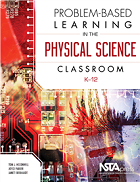 Problem-based learning (PBL) is a strategy that is tailor made for teaching science. Under the PBL framework, students actively drive the learning process, one that takes them through rich and authentic, but incompletely defined, scenarios. This educational approach requires students to collaborate with others to analyze the problem that’s presented, ask questions, propose hypotheses, identify the information needed to solve the problem, and seek related information via literature searches and scientific investigations.
Problem-based learning (PBL) is a strategy that is tailor made for teaching science. Under the PBL framework, students actively drive the learning process, one that takes them through rich and authentic, but incompletely defined, scenarios. This educational approach requires students to collaborate with others to analyze the problem that’s presented, ask questions, propose hypotheses, identify the information needed to solve the problem, and seek related information via literature searches and scientific investigations.
Implementing PBL for the classroom, however, can be challenging for science educators as curriculum resources are hard to find. That’s one of the reasons why veteran science educators Tom McConnell, Joyce Parker, and Janet Eberhardt teamed up to write Problem-Based Learning in the Physical Science Classroom. This book first takes readers through the overall PBL structure and discusses how it can be applied to the K-12 classroom. Then the authors share a collection of PBL problems which were developed by content experts who participated in the PBL Project for Teachers, a National Science Foundation –created professional development opportunity that used the PBL framework to help science educators develop a deeper understanding of science concepts across eight different content strands.
The authors also ensured that the problems they included are useful to science educators by including information that aligns the objectives and learning outcomes for each problem with the NGSS—and can be taught to learners with differing levels of prior knowledge.
The book’s chapters are arranged as follows:
- Chapter 1 discusses why PBL should be an essential tool in each teacher’s teaching toolbox. The authors provide background on how PBL was developed, how it works across a range of disciplines, and the basic framework for a PBL lesson.
- Chapter 2 covers the alignment of the PBL problems and the analytical framework of the NGSS.
- Chapter 3 takes science educators through strategies for facilitating the PBL lessons.
- Chapter 4 shares tips on how teachers can group students, manage information, and assess student learning throughout the process.
- Chapters 5-8 present designed and tested problems (describing motion, forces and motion, engineering energy transformations, or engineering, electricity and magnetism), show the NGSS alignment, and provide teacher and student resources about the science concept and the problem.
The authors readily acknowledge there are far more science problems that the 14 that they present in this book that would make excellent PBL topics. That’s why they included a final chapter, one that shares strategies for teachers to write their own PBL lessons and offer tips for creating problems that are “rich, engaging, and ideal for addressing the standards you need to teach.”
This book is the third volume in NSTA’s PBL series, the first of which presented life science problems and the second volume that offered problems specifically written for teaching Earth and space science.
“There is a lot to like about this text,” said Peggy Ertmer, professor emeritus of Learning Design and Technology at Purdue University, and founding editor of the Interdisciplinary Journal of Problem-Based Learning. “Implementing PBL is difficult for teachers, and few curriculum guides are available to support their efforts. This book fills that gap by providing the kinds of strategies and examples teachers need to facilitate open-ended inquiry in science classrooms.”
Read the free sample chapter, “Facilitating Problem-Based Learning,” to understand how to help students: function in a self-directed classroom; establish discussion guidelines and procedures, launch the problem, and generate hypotheses; develop a plan for gathering information; and share what they found. Teachers are given helpful information on how to assess their students’ learning and how to use the assessment results to respond to student needs.
This book is also available as an e-book. It’s also available as part of a set of three books: Problem-Based Learning in the Earth and Space, Life Science, and the Physical Science Classroom, K-12.
Follow NSTA
 Problem-based learning (PBL) is a strategy that is tailor made for teaching science. Under the PBL framework, students actively drive the learning process, one that takes them through rich and authentic, but incompletely defined, scenarios.
Problem-based learning (PBL) is a strategy that is tailor made for teaching science. Under the PBL framework, students actively drive the learning process, one that takes them through rich and authentic, but incompletely defined, scenarios.
Ideas and inspiration from NSTA’s September 2018 K-12 journals
By Mary Bigelow
Posted on 2018-09-18
Whether you’re looking for ideas on systems thinking, adding strategies to your teaching repertoire, or creativity in science, this month’s K-12 journals have it all. Regardless of what grade level or subject you teach, check out all three journals. As you skim through the article titles and description, you may find ideas for lessons that would be interesting your students or the inspiration to adapt a lesson to your heeds or create/share your own.
NSTA members, as always, have access to the articles in all journals! Click on the links to read or add to your library.
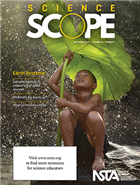 Science Scope – Earth Systems
Science Scope – Earth Systems
From the Editor’s Desk: Earth: The Ultimate Recycler “…I’ve found students don’t always easily comprehend the importance or the mechanisms behind geoscience processes. Even something as simple as the water cycle is fraught with misunderstanding as students tend to harbor ideas that range from thinking that the water coming from various sources in their house differs in terms of its potability, to thinking that the water from a water bottle has never been part of the water cycle.”
Articles in this issue that describe lessons (many of which use the 5E model) include a helpful sidebar documenting the big idea, essential pre-knowledge, time, safety issues, and cost. The lessons also include connections with the NGSS.
- Classroom-Scale Experiments in System-Scale Modeling With Application to the Global Cycle of Water and Energy shows how to connect modeling with experimentation, using energy flow in the water cycle as a context.
- Expand students’ knowledge and experiences of plate tectonics. Getting Beneath the Surface has a series of five activities that model how plate move.
- Students are interested in weather and weather patterns. The unit documented in When Air Masses Collide! Incorporates seven “investigations” (the last is a culminating assessment) on predicting the weather based on several variables.
- From the layers of the Grand Canyon to the hoodoos of Bryce Canyon, our National Parks have fascinating rock formations. The lesson in National Parks Investigation integrates learning about types of rocks and the rock cycle with exposure to the resources of the National Park system.
- Integrating Technology: Using Science and Technology to Protect Urban Water Sources involves students in an investigation of urban water quality. The authors share a graphic organizer/worksheet for students to compare data on two cities.
- Classic Lessons 2.0: Where Did the Leaves Go? updates a traditional lesson into a 5E investigation on how leaves decompose. The article includes examples of student work and suggestions for implementation.
- Teacher To Teacher: Using Phenomena to Drive Student Questions incorporates student questions and misconceptions about flooding in urban areas.
- Turn cloud gazing into Citizen Science: Cloudy With a Chance of “Cirrus” Science, using a NASA app.
- Graphs summarize and present data. If your students need a refresher on graphing,, Interdisciplinary Ideas: Data Literacy 101 has suggestions on choosing effective graphs for a variety of purposes and types of data.
- Scope on the Skies: Ozone: The Protective Layer Above Us has a refresher on the effects of ozone on climate.
These monthly columns continue to provide background knowledge and classroom ideas:
- Disequilibrium: The Connection Between Weather and Air Masses
- Science For All: Creating a Culturally Responsive Middle School Science Classroom
- Teacher’s Toolkit: Community Connections: Involving family in homework.
For more on the content that provides a context for projects and strategies described in this issue, see the SciLinks topics Air Masses, Biotic/Abiotic Factors, Clouds, Decomposers, Ecosystems, Flooding and Society, Floods, Greenhouse Effect, Ozone, Phases of Matter, Plate Tectonics, Rock Classification, Rock Cycle, UV Index, Tornadoes, U.S. National Parks, Water Cycle, Water Quality, Watersheds, Weather, Weather Forecasting
Keep reading for The Science Teacher and Science & Children.
The Science Teacher – Creative Thinking
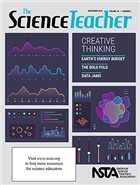
Editor’s Corner: Creative Science “Problem- and project-based learning, authentic engineering tasks, and student-centered inquiry can all involve students in creative, complex problem-solving and design. And, Job security increasingly requires imagination and creativity. As routine tasks become digitized and automated, successful workers will be those who imagine and create. “
The lessons described in the articles include a chart showing connections with the NGSS. The graphics are especially helpful in understanding the activities and in providing ideas for your own investigations.
- Earth’s Energy Budget focuses on the relationships between energy, greenhouse gases, aerosols, and temperature. The article includes a description of the Energy Budget Model and samples of student explanations.
- Learning Biology Through Molecular Storytelling uses a storytelling approach along with data from the Protein Data Bank (URL provided) to help students connect the shapes of biomolecules with their functions.
- In The Bold Fold activity, students create protein models while studying transcription, translation, and protein folding. The authors include their research on student learning using this model.
- There are stories in every data set. Data Jams has advice on using a model to improve students’ data literacy, analyze scientific research, and share their findings. The authors share their experiences and include photographs of student projects.
- Infographics are another form of story telling. Creative Visual Representation shows how students can synthesize data sources to support a claim in a visual format. The examples provided show infographics as alternatives to research papers, in poster sessions, and as reinforcement.
- In addition to Focus on Physics: Making Sense of Distribution Curves, the author includes action research on the distribution of grades as a context/example.
- Artists can apply their talents in science, as described in Career of the Month: Medical Artist.
These monthly columns continue to provide background knowledge and classroom ideas: Right to the Source: Coloring the Russian Empire One Photograph at a Time
For more on the content that provides a context for projects and strategies described in this issue, see the SciLinks topics Biomolecules, Blackbody Radiation, Climate Change, Communication Skills, DNA, Energy in the Atmosphere, Eukaryotic Cell Structures, Graphing Data, Organelles, Proteins, Sickle Cell Disease, Transcription, Translation, UV Index
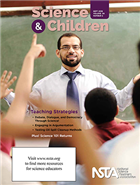 Science & Children – Teaching Strategies
Science & Children – Teaching Strategies
Editor’s Note: Finding a Way — With so much going on in the classroom, above and below the surface, a teacher needs to have a wheelbarrow full of strategies to help deal with the expected and not-so-expected events.
The lessons described in the articles have a chart showing connections with the NGSS. Many are based on the 5E (or 7E) model and include classroom materials, illustrations of student work, and photographs of students engaged in the activities.
- Don’t get turned off by the title! Killing Two Birds With One Stone describes ways to integrate reading/writing with science through interactive notebooks. Samples of student pages are included.
- Science Is “RAD” also addresses notebooking, including strategies for helping students with disabilities or who need additional support. (RAD is a mnenomic for Record-Analyze-Develop an Explanation as a writing strategy).
- Asking questions about meaningful issues can involve elementary students. Debate, Dialogue, and Democracy Through Science! incorporates the Socioscientific Issues framework to increase students’ “science content knowledge, understanding of the nature of science, quality of argumentation abilities, and characteristics for global citizenship, including empathy and perspective taking” The sample lesson shows students learning about the characteristics and value of wetlands using hands-on activities and trade books.
- Engaging in Argumentation shows how argumentation and the 5E model can be integrated, including suggestions for students who are English Language Learners. A useful diagram illustrates the integration, along with graphic organizers and photos of student work.
- Testing Oil Spill Cleanup Methods Ethically incorporates engineering practices and discussion about ethics as students design strategies to clean up an oil spill.
- Engineering Encounters: The Soda Can Crusher Challenge also involves students in the engineering design process.
- The author of The Early Years: Begin With Open Exploration where students “acquire hands-on knowledge of what they know and begin to wonder, think, and raise questions.” The included lesson Exploring Isopods has an example of this open exploration.
- In addition to recommending trade books, Teaching Through Trade Books: Biological Diversity: In the Present and in the Past has lessons on Honing Into Habitats (K-2) and Looking at Living Fossils (3-5).
- Methods and Strategies: Hiding in Plain Sight also addresses integrating literacy and 5E science lessons through trade books.
These monthly columns continue to provide background knowledge and classroom ideas:
- Teaching Teachers: Seeing the Struggle and Reaping the Rewards — A Pathway for Beginning to Explore the Next Generation Science Standards
- The Poetry of Science: Teaching Strategies
- Science 101: How Can I Make Science Fun and Have Students Learn More By Using Phenomenon-Based Learning? (a Background Booster for teachers on electric circuits, magnets, speed and motion)
For more on the content that provides a context for projects and strategies described in this issue, see the SciLinks topics Biodiversity, Buoyancy, Electric Current, Fishes, Food Chains, Forces and Motion, Fossils, Habitats, Insects, Magnets, Plant Growth, Reading and Writing in Science, Water Quality, Wetlands
Whether you’re looking for ideas on systems thinking, adding strategies to your teaching repertoire, or creativity in science, this month’s K-12 journals have it all. Regardless of what grade level or subject you teach, check out all three journals. As you skim through the article titles and description, you may find ideas for lessons that would be interesting your students or the inspiration to adapt a lesson to your heeds or create/share your own.
NSTA members, as always, have access to the articles in all journals! Click on the links to read or add to your library.
Isopods—your favorite animal? Children are fascinated
By Peggy Ashbrook
Posted on 2018-09-18
What you call these small animals probably depends on where you grew up. Pillbug, sowbug, roly-poly, woodlice, potato bug, cochinilla, slater, and Armadillidium vulgare are some of the names I’ve heard for my favorite animal, the isopod. What kind of animal is it? To answer this question begin by making close observations, taking comfort in knowing that they will not scratch, bite, or sting you, and they don’t smell bad and are not sticky. And they are relatively sturdy animals that can be handled without damaging them, and the common land species are plentiful in many places so are not endangered. Avoid touching other invertebrates such as spiders, bees, and centipedes because they may bite or sting. And wash your hands after handling the isopods, just in case.
Searching for isopods, observing their behavior, and where they are found introduces children to a kind of animal that likes damp places. Reading about them, creating a container habitat, and caring for the isopods provides young children with multiple occasions to observe their body structure and learn that they are different from familiar animals such as worms, caterpillars and butterflies, fish, birds, and pet dogs in many ways. Children build on their prior experiences each time they are engaged with a science concept. Using a simple hand lens will reveal small details. Taking and enlarging digital photographs is also a good way to see small body parts.
Any enclosed habitat becomes soiled over time and needs to be refreshed. Children delight in misting the container with water and adding leaves. Your isopods will need some fresh soil and decaying vegetable matter, preferably from the area where you found them.
I wrote about the value of children’s open exploration of phenomenon and materials in the Early Years column in the September 2018 Science and Children. The activity page, “Exploring Isopods,” gives beginning instructions for implementing this open exploration. Learn more about open exploration in the Young Scientist books. See other articles in Science and Children about learning through observing isopods by searching on the “Your Elementary Classroom” page or in the NSTA Learning Center for “isopod.” I’m not the only educator who likes these animals!

 Online there are scientific studies about these cute animals and an International Symposium on Terrestrial Isopod Biology. Here are two online sites that have additional information for children and educators. How will your children share what they learn through observation?
Online there are scientific studies about these cute animals and an International Symposium on Terrestrial Isopod Biology. Here are two online sites that have additional information for children and educators. How will your children share what they learn through observation?
Featured Creatures, Entomology and Nematology Department, University of Florida.
http://entnemdept.ufl.edu/creatures/MISC/Armadillidium_vulgare.htm
BioKids, Kids’ Inquiry of Diverse Species
http://www.biokids.umich.edu/critters/Armadillidium_vulgare/
What you call these small animals probably depends on where you grew up. Pillbug, sowbug, roly-poly, woodlice, potato bug, cochinilla, slater, and Armadillidium vulgare are some of the names I’ve heard for my favorite animal, the isopod. What kind of animal is it? To answer this question begin by making close observations, taking comfort in knowing that they will not scratch, bite, or sting you, and they don’t smell bad and are not sticky.






